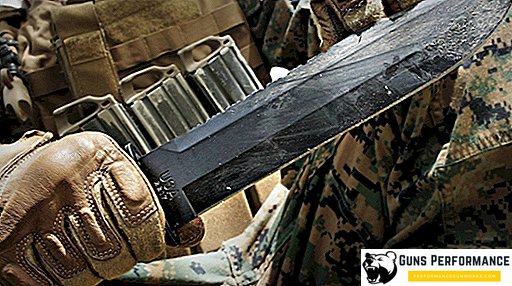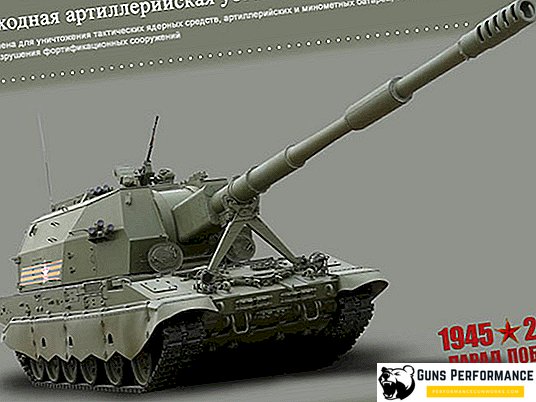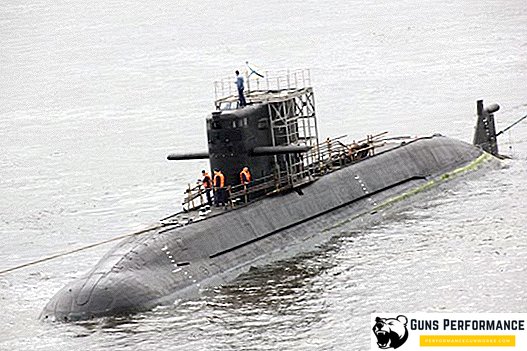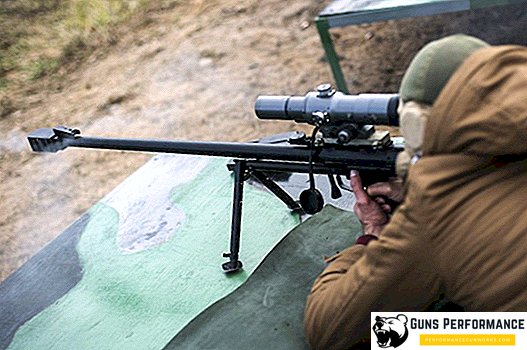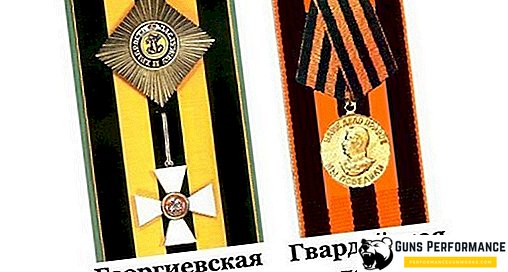
The Guards Ribbon is a glorious successor to the traditions of the St. George Ribbon, although its appearance in the USSR is not formally connected with the award of Tsarist Russia. This award, as well as the return of officers in the Red Army, is connected precisely with the revival of the patriotic past of Russia, therefore, it will be wrong to consider the Guards tape separately from the St. George's. Now, many are tying the Guards Ribbon on clothes, celebrating Victory Day, but few know the true history of this award, and why it has become a symbol of Victory Day in the Great Patriotic War.
The history of the Guards Ribbon
The Soviet Guards Ribbon was introduced after the emergence of the so-called "Soviet Guard", which appeared in 1941 after the battle of Yelnia. Four infantry divisions of motorized riflemen were awarded the title "Guards Divisions", and in 1942 the Guards badge appeared. Later, this ribbon was used to design the pads for the Order of Glory and the medal "For Victory over Germany".
Although the appearance of the Guards Ribbon is associated with the revival of the St. George insignia, they are formally not identical, therefore calling them the same distinction (as propagated in modern media) would be fundamentally wrong.
The appearance of the Guards Ribbon and the "Guards" divisions
After the revolution and the overthrow of Tsarism in Russia, all the tsarist awards and attributes were brought to complete oblivion, but during the Great Patriotic War, one of the main awards of the tsarist government was actually revived. Guards tape, which was very similar to the St. George ribbons, reappeared on the pads of soldiers' medals. One of the most honorable orders of the Second World War - the Order of Glory - just received such a ribbon of characteristic black and orange colors. Despite the resemblance, this tape was never called "St. George".
Although it is believed that the Order of Glory was practically copied from the crosses of St. George and even had a similar division into degrees (there were even 4 degrees in the project that Stalin did not approve), there is no evidence in the official documents of this hypothesis. Based on this, it is safe to say that the Guards Ribbon is a special attribute that should be considered separately.
The name "Guards" has gone since 1941, when combat divisions, who fought bravely against the enemy, were given the ranks of the Guards. Already in 1942, a special lapel badge "Guard" was made for the personnel of the Guards divisions.
Despite the fact that the badge of the guard was conceived as one for all armed forces, the Soviet Navy established its own sign, which is popularly called the "Marine Guard". Guards ribbon sailors decorated their caps, laid them along the rim of their beskozyrok. The ends of the tape were not fixed and fluttered freely. The name of the ship or part was laid out in gold embossed on the front of the Navy's guards tape, and anchors were depicted on the free ends.

Although many argue that the ribbons at the Victory Parade were St. George's, there is no doubt that they were exactly the guards.

On November 8, 1943, the Order of Glory was established in the USSR, which copied the traditions of St. George orders and was also of three degrees. This order received for their bravery in battle, and the Guards Ribbon reminded old soldiers of the royal crosses of St. George. During the period from 1943 to 1945 of the Great Patriotic War, more than 2,500 people became full holders of the Order of Glory (all three degrees that were awarded sequentially, starting with the third). 46,000 people became the Commander of the Order of Glory of the 2nd degree, and the 3rd - about 980,000.
In March 1992, by the decree of the Presidium of the Supreme Soviet of Russia, the Order of St. George and the St. George Cross were restored.

The value of flowers on the Guards and St. George ribbons
You should not think that the black and orange colors on the St. George ribbon were chosen randomly or at the whim of Empress Catherine II. These colors are fully consistent with the colors of the state coat of arms of Russia:
- Black corresponds to the color of the double-headed eagle;
- Orange is related to the yellow field of the State Emblem.
The bands on the St. George Ribbon (according to one of the versions) correspond to the martyrdom of St. George and his resurrection. In addition, black and orange colors correspond to the color of flame and smoke, which are indispensable attributes of war. Since this award was given only for feats on the battlefield, the colors of the war perfectly corresponded to it.
Only at a turning point in 1942, when the enemy was near Moscow, did Stalin return the former titles of officers and soldiers of the Russian army to the Russian people. At the same time epaulets were returned (so hated since the revolution), the St. George ribbon was revived (under the name of the Guards) and the Order of Glory of three degrees was established (which completely copied the royal order of St. George the Victorious). Guards tape was present on the orders, pads and banners of the Soviet troops.
After 2005, thanks to the St. George Ribbon campaign, a huge number of people were able to learn about this symbol of valor, which is almost 250 years old.

The difference between the St. George and the Guards tapes
Despite the similarity, St. George ribbon is different from the Guards:
- The Guards Ribbon is orange, and on the St. George's it is yellow;
- All parameters of the Soviet ribbon were strictly regulated, the royal ribbon was never regulated;
- During the years of its existence, the royal ribbon had various color shades of yellow, but it was always popularly referred to as “St. George”.
Despite some external differences, both tapes performed the same role: they emphasized the courage of the holders of the Orders of St. George and the gentlemen of the Orders of Glory. Both during tsarist Russia, and after the Great Patriotic War, gentlemen of orders enjoyed deserved respect among the population.
Over the past few years more people put the St. George ribbon on Victory Day.
Order of Glory - the main soldier Order of the times of the Great Patriotic War with the Guard tape
The Order of Glory was introduced in November 1943, when the victory over Germany became obvious and was only a matter of time. The initiator of its creation was personally I.V. Stalin. This order was introduced to encourage ordinary soldiers and junior commanders, who by their heroic actions were able to bring victory closer.
Order of Glory issued for heroic deeds in battle. Initially, this order was planned to be called the Order of Bagration, but Stalin strongly opposed this. The Order was conceived as a reward for ordinary soldiers, so he considered the analogy with other "general" awards inappropriate. He chose the name “Order of Glory” because there are no victories without glory. At the same time, Stalin nevertheless rejected the 4th degree of the order. The Order of Glory consisted of 3 degrees, by analogy with other Soviet orders.
The Guards ribbon on the orders of Glory of all three degrees was completely identical, which copied the pre-revolutionary system of awards. The Order of Glory with the Guards Ribbon is the most honorable Order of the USSR during the Great Patriotic War.
Medal "For the victory over Germany"

In the design of one of the most popular medals of the USSR "For the victory over Germany" was also used guards tape. The popularity of this medal is due to the fact that it was awarded not only to the fighters of the Soviet army, but also to other citizens of the USSR, who by their actions at the front or in the rear helped the regular army.

The medal was round and made of brass. With the help of a ring with an eye, it was fastened with a block, which was covered with a guard tape of traditional colors.
Medal "For the capture of Berlin"
In April 1945, General Khrulyov instructed to develop a series of medals for the capture and liberation of cities. Originally German cities were considered captured, and cities of other countries fought off from the enemy were liberated.
The medal "For the capture of Berlin" was the most honorable award in this series.
The medal was round with convex inscriptions. The block was made by the Guards Ribbon, which was in the middle of the red silk fabric, covering the shoe.

Although the collapse of the USSR destroyed many of the values that had originated during the Russian Empire, the tradition of the St. George ribbon was revived during the Second World War (called Guards) and is still alive. The Order of Glory and the medal "For the Capture of Berlin", whose pads are decorated with guards tape, are among the most valuable awards of the USSR, and the most common medal "For Victory" allowed many war veterans and war veterans to touch the legendary glory of the Guards tape.


